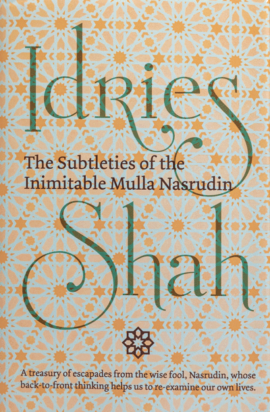
Sufis, Shah says, have throughout history been behind many advances in science and philosophy. The paradox of Sufism is that although it is usually described as mystical, its purpose is to increase the store of rational truth in the world. The work's real power, however, is an anthology of hundreds of Sufi or dervish tales, riddles and sayings which could take a lifetime to fully appreciate and understand.

The four main Sufi orders, including the Chishti, Qadiri, Suhrawardi and Naqshbandi, are also described. An enjoyable introduction to the subject, it includes brief portraits of well-known Islamic figures he believed to be Sufi masters, including Ghazzali of Persia, Omar Khayyam of Rubaiyat fame, Attar of Nishapur (author of Conference of the Birds ), Ibn El-Arabi of Spain, Saadi of Shiraz (author of The Rose Garden), Hakim Sanai and Jalaludin Rumi (author of the famous Masnavi, or Couplets of Inner Meaning). Shah's many books expanded awareness of Sufi philosophy and writings in the West, and The Way of the Sufi is perhaps his best known work. Usually understood as the more mystical and personal dimension of Islam, the author makes a case that Sufi wisdom goes back well beyond the era of Muhammad, possibly to the time of Hermes in ancient Egypt.

What do Shakespeare, Roger Bacon, Chaucer and Dante have in common? Is there anything connecting Hindu philosophy, Kabbalah knowledge, the teachings of Rosicrucianism and Freemasonry, and Japanese Zen stories? In The Way of the Sufi, Idries Shah suggests that these were all influenced by a body of teaching now given the name Sufism.


 0 kommentar(er)
0 kommentar(er)
